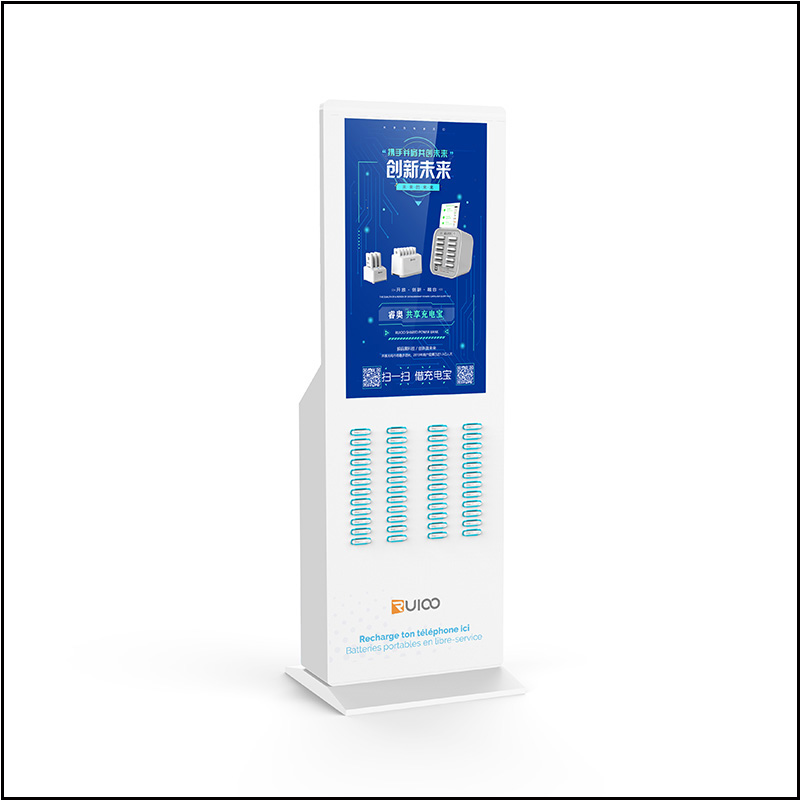Introduction
In an increasingly digital world, where smartphones and other portable gadgets have become integral to our daily lives, the need for reliable power sources has never been more crucial. No one likes the dreaded "low battery" notification when they're out and about, and that's where power bank sharing comes to the rescue. Power bank sharing is a growing trend that offers an innovative solution to the perennial problem of running out of battery power on the go. In this article, we will delve into what power bank sharing is, how it works, and its impact on our lives.

The Rise of Power Bank Sharing
Power bank sharing is a relatively new concept that has gained significant popularity in recent years. It addresses a fundamental issue that smartphone users face - the limited battery life of their devices. As smartphones continue to evolve with more features and power-hungry applications, their batteries struggle to keep up. Power bank sharing aims to bridge the gap by providing users with convenient access to portable chargers whenever and wherever they need them.
How Power Bank Sharing Works
Power bank sharing typically operates through a network of shared charging stations or kiosks strategically placed in public areas such as airports, shopping malls, coffee shops, and transportation hubs. Users can locate these stations through a dedicated mobile app or by scanning QR codes on the charging kiosk.
Here's a step-by-step breakdown of how power bank sharing works:
Download the App: To get started with power bank sharing, users need to download the official app of the power bank sharing service provider. These apps are usually available for both Android and iOS devices.
Locate Charging Stations: The app allows users to locate nearby charging stations on a map. Users can choose the nearest station based on their current location or destination.
Scan QR Code: Upon arriving at the chosen charging station, users need to scan the QR code on the kiosk using the app. This initiates the process and unlocks a power bank for their use.
Charge and Return: Users can then take the unlocked power bank and connect it to their device(s) for charging. Once their device is sufficiently charged, they can return the power bank to any available slot in the charging station.
Payment and Usage: Most power bank sharing services charge users based on the time they use the power bank. Payment is usually handled through the app, and users can monitor their usage and billing in real-time.
Benefits of Power Bank Sharing
Convenience: Power bank sharing offers unmatched convenience to smartphone users. Instead of worrying about carrying bulky power banks or constantly searching for electrical outlets, users can access portable chargers whenever they need them, making it ideal for travelers, students, and professionals on the move.
Cost-Effective: Many power bank sharing services offer affordable pricing structures, making it a cost-effective solution compared to purchasing multiple power banks. Users only pay for the charging time they use, saving money in the long run.
Reduces Environmental Impact: With power bank sharing, fewer people purchase single-use power banks, reducing electronic waste. This aligns with eco-conscious efforts to minimize the environmental footprint of electronic devices.
No Need for Cables: Power bank sharing stations come equipped with various charging cables and connectors, eliminating the need for users to carry their own. This means users can charge a wide range of devices, from smartphones and tablets to headphones and fitness trackers.
Universal Compatibility: Power bank sharing services often provide power banks with multiple output options, ensuring compatibility with various devices, including both iOS and Android.
Challenges and Considerations
While power bank sharing offers numerous benefits, it's not without its challenges and considerations:
Network Availability: Power bank sharing services are more prevalent in urban areas and popular tourist destinations. Users in rural or less densely populated regions may have limited access to these services.
App Dependency: Power bank sharing relies heavily on mobile apps, which may pose challenges for users with limited smartphone access or those who are not comfortable using technology.
Security and Privacy: Users must trust the service provider with their personal and financial information, as payments are typically processed through the app. Ensuring the security and privacy of this data is critical.
Maintenance and Reliability: The reliability of power bank sharing stations can vary. Users may encounter issues such as empty stations or power banks with low capacity, which can be frustrating.
Conclusion
Power bank sharing is a technological innovation that addresses a common modern-day problem - the need for reliable and convenient mobile device charging on the go. It offers numerous benefits, including convenience, cost-effectiveness, and environmental sustainability. However, users must also consider factors like network availability, app dependency, and security when embracing this technology.
As our reliance on smartphones and portable devices continues to grow, power bank sharing is likely to become an even more integral part of our lives, providing a seamless and reliable solution to the perennial low battery problem. It is a testament to human ingenuity, where innovation meets convenience, making our connected lives just a little bit easier.




Comments
Please Join Us to post.
0